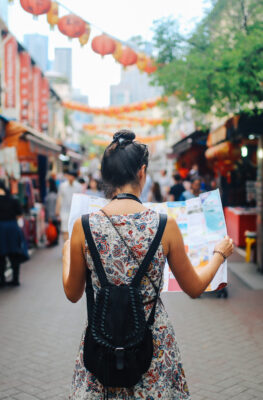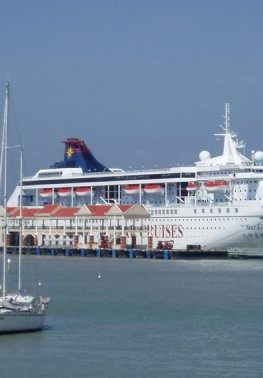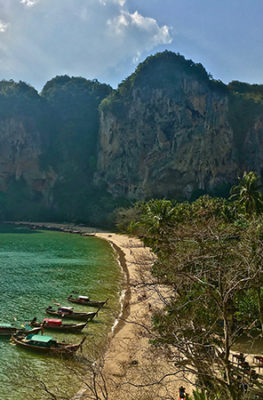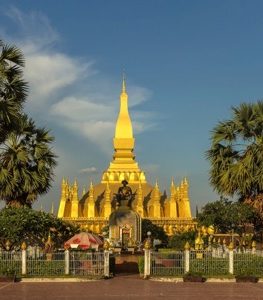Published on July 24, 2020
Brunei & Cambodia: Nature 2
In the second installment of Nature in Southeast Asia, we explore a variety of other natural wonders in Brunei and Cambodia. Whether hiking in a national park, laying by the water, or admiring the varied fauna of the countries, each destination is sure to delight nature lovers.
Brunei
While Singapore holds the title for the smallest Southeast Asian country, Brunei isn’t far behind. At just 5,765 sq km, Brunei is filled with incredible presentations of nature. In Labi, animals like hornbills, painted tree frogs, and birds roam freely among the forest’s sweeping canopy. In the village of Kampong Ayer, Brunei’s “Venice of the East” can be taken in by a cruise on the Brunei River. The region of Tutong is home to black water lakes and Eco Ponies Garden, a farm stay experience perfect for taking in the area.
Labi

Animal lovers will have no shortage of exciting spotting opportunities in Labi. Along with hornbills and painted tree frogs, there’s a wide variety of colorful, beautiful birds in the area. While they can easily hide inside the forest, the Labi ridge is a wonderful spot on the forest edge to spot birds and admire the canopy around you. Pick up a guide to bird watching in Brunei or download one here and enjoy the views.
Kampong Ayer

While the homes of Kampong Ayer are man-made, visiting the village is a fantastic experience to witness a community that is one with nature. Known as the “Venice of the East,” Kampong Ayer is home to more than 9,000 people spread throughout its 30 floating villages connected via bridges and wooden walkways. The self-contained stilted community is a symbol of Brunei’s well-preserved culture. The best way to see Kampong Ayer is to enjoy a river cruise to view the variety of colorful homes and gorgeous views of the Brunei River!
Eco Ponies Garden
Founded in 2015, Eco Ponies Garden is designed as a farm stay to preserve the way of life of the local Dusun and Kedayan indigenous people who live in Tutong. The region is known for its black water lake, striking hilltop views, and beautiful shrubbery. In the garden, visitors are given the opportunity to experience the culture by helping cook a meal, learning about their farm-to-table practices, and hearing about authentic kampung life.
Aquatic adventures and majestic animals also await visitors in Cambodia.
Cambodia
Whether you want to relax by the water, hike to the top of a mountain, or catch sight of wild animals, Cambodia has you covered. At Kep National Park, hikers can explore a variety of pagodas, viewpoints, and see a monkey or two strolling along the path. Right outside of Phnom Penh is the Tonle Sap River, an integral part of the country stemming from a lake at Siem Reap. Off the mainland is Koh Rong Island, a stunning oasis perfect for any beach lover. At night visitors can witness the glowing plankton of the area.
Kep National Park

Across 20 square miles of jungle, Kep National Park provides an oasis for anyone looking to immerse themselves in nature and wildlife. Sitting above Kep Beach, the park features a five-mile walking trail looping past pagodas and stunning viewpoints. A standout is the “Stairway to Heaven” trail, passing a nunnery and depositing visitors at the Sunset Rock viewpoint. On a clear day, hikers can see all the way to Vietnam. As you walk, keep your eye out for monkeys, often spotted along the trail.
Tonle Sap River

The view from Tonle Sap Street captures the capital city of Phnom Penh. Here the sun sets over the Tonle Sap River just before it meets the Mekong River. Considered the lifeblood of Cambodia, Tonle Sap stretches in its entirety between Phnom Penh and Siem Reap. Tonle Sap has long held this significance, serving as a supplier for the Khmer Empire. During the wet season, the Mekong produces so much water that, at one point, the Tonle Sap is forced to flow backward, making the Tonle Sap Lake it feeds from swell to five times its normal size—an incredible phenomenon. Not only is Tonle Sap Lake, Southeast Asia’s largest freshwater lake, but, in 1997, it was designated a UNESCO biosphere reserve.
Koh Rong Island

There’s not a care in the world when you visit Koh Rong Island, found off the coast of Sihanoukville, Cambodia. The island is Cambodia’s second-largest at 30 miles squared. With over two-thirds of the coastline devoted to beaches, lay on the pristine sand during the day and search for glowing plankton at night. If you want a bit of an adventure, use a snorkel at night to see the plankton up close. The interior of the island is covered extensively in the jungle and quite hilly, with the largest mountain standing at 1,037 feet tall.
Learn more about the diverse natural beauty of these two nations in person on your next trip.






